Proper staff scheduling is an essential part of having a productive and profitable business in the hospitality industry – it helps to keep costs low, morale high and customers satisfied.
Yet with so many moving pieces involved (varying shifts, employee absences, seasonal changes in demand, and more) creating the perfect schedule is easier said than done. That’s why it pays to get educated on the basics of effective hospitality staff scheduling.
Thus, in this blog post, we’ll give you all the insights on creating an optimal employee scheduling strategy that works for your team and organization – no matter what kind of environment or establishment you run.
Let’s dive right in!
Main Challenges of Hospitality Employee Scheduling (+ A Checklist)
Effective hospitality staff scheduling is all about ensuring that your team is appropriately organized, optimized, and engaged to deliver exceptional customer service. However, it comes with a set of challenges to overcome.
Here are just a few of them:
Balancing the needs of your guests and employees
At the end of the day, your guests’ satisfaction is what matters most. But you can’t forget about the needs of your staff – they have lives outside of work too! Finding a balance between the two can be a real headache.
Employee turnover and understaffing
Unfortunately, even the most satisfied and culturally fit employees can eventually quit your company. This can wreak havoc on scheduling, as you’ll need to constantly find new staff and train them up, all while keeping the company steady and staffed.
Budget constraints
Every business has limitations on its budget, and any overstaffing or understaffing can lead to financial loss. Thus, you must work within these constraints to keep on providing excellent service while staying within budget.
Last-minute requests
Unforeseen events, unplanned employee absences, and late-in-the-day requests from customers make it even more challenging to respond and make changes to crucial shifts without stressing your team out and risking the quality of performance.

8 Rules of Effective Hospitality Staff Scheduling
1. Schedule with business needs in mind
According to Jevon Wooden, there are five major needs every business must focus on: revenue, customer satisfaction, employee satisfaction, market share, and profitability. To get those needs met, you need to leverage technology, people, and the right processes – and of course, hospitality employee scheduling is part of this deal.
So, how can you ensure your business earns enough money, stays profitable in the long run, and makes its customers happy without compromising its team’s well-being? This goal requires a comprehensive approach that starts with the introduction of high service standards and smart capacity planning.
How to do it correctly:
Schedule for high-quality service
Service teams are usually required to abide by strict rules and codes of behavior. However, according to Su Kyung Kim and Yujie Zhan, the best results in terms of service quality usually come from employees’ eagerness to meet clients’ needs using “rule-breaking” behaviors that go against the consistent norm. By personalizing service and accommodating individual preferences (even if such favors deviate from standard procedures a bit), you promote a sense of indebtedness in your customers, making them feel like they have to pay back for your kindness and continue to buy products or services from your business.
This finding doesn’t mean that you have to forget all about rules and standard procedures. It mainly means that you need to have enough dedicated employees who show a willingness to actually listen to your customers and not just deal with them in a robot-like way.
Thus, when it comes to hotel staff scheduling, the goal is to have enough team members on each shift and make sure they have enough time on their hands to provide your guests with an unforgettable experience. Pay attention to interpersonal team dynamics as well – no conflicts in the team should ruin the vibe and consume even a bit of energy your employees can invest in customer service.
Consider your accommodation capacity
The number of guests your business strives to (and can) accommodate is also a key factor to take into account when it comes to staff scheduling.
You don’t want to be overstaffed, which can result in unnecessary costs. And you don’t want to be understaffed, which can lead to staff burnout, poor service, and ultimately, a decline in business performance. Finding the sweet spot between expected workloads and employee presence is your main objective here.
Predict seasonal shifts in demand
During peak periods, you may need to hire more staff to handle the influx of guests. During slow periods, you may need to scale back to avoid unnecessary costs. This way, you’ll be able to adjust your workforce to any changes in demand, ensuring you’re always running at peak efficiency.
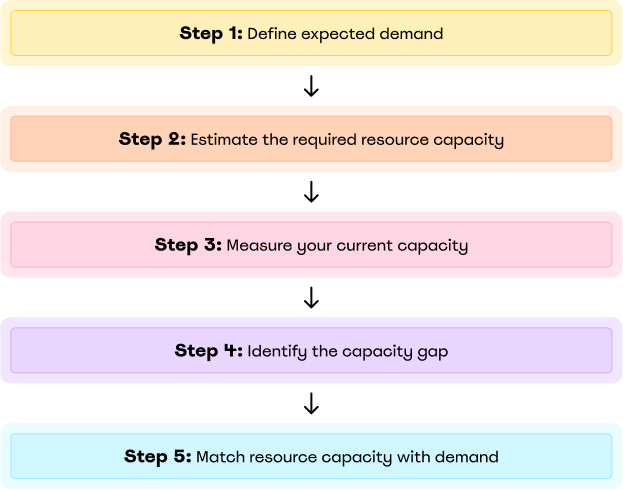
2. Make a budget
Without a clear understanding of how much money your business can afford to allocate toward staffing, you risk over-hiring, under-hiring, or worse – not being able to pay your employees at all.
By taking the time to develop a staffing budget, you can ensure that you’re making smart, financially sound decisions when it comes to building your team and putting it to work.
How to do it correctly:
Determine your staffing needs
Before you can even think about budgeting for staffing costs, you need to figure out how many employees you need to keep your business operations running smoothly. Take into account factors such as workload, individual workload capacity, and team dynamics.
Calculate total compensation costs
To effectively budget for staffing costs, you need to have a clear understanding of the total compensation costs associated with each employee, including but not limited to wages, benefits, bonuses, and taxes.
Don’t forget about overtime expenses
Overtime work is the dreaded budget-killer.
It’s vital to take into account the costs of overtime, which are usually much higher than the cost of regular work hours and can easily explode your staffing budget if left out of control. But first, make sure to talk to your employees and schedule their workloads in a way that helps avoid overtime altogether.
Regularly review and adjust as needed
The staffing budget is not a “set it and forget it” type of situation. You will have to regularly review and adjust it whenever necessary, like when your business is exposed to unexpected changes in the external environment (hello, pandemic!).
Make use of budget tracking software
No matter what type of business you run, it’s hard to make it all right and stay efficient without the help of automation-powered technology. It helps employers, managers, and their employees complete a variety of tasks in an effortless and error-free way – overtime and budget tracking are no exception.
So, if you’re tired of playing a guessing game with your staffing budget, try actiTIME. This multifunctional time tracking solution has a built-in budget management feature that lets you allocate staff-related budgets to different projects and tasks and then monitor the ongoing use of resources (including costs, revenues, and time) via visual progress bars.
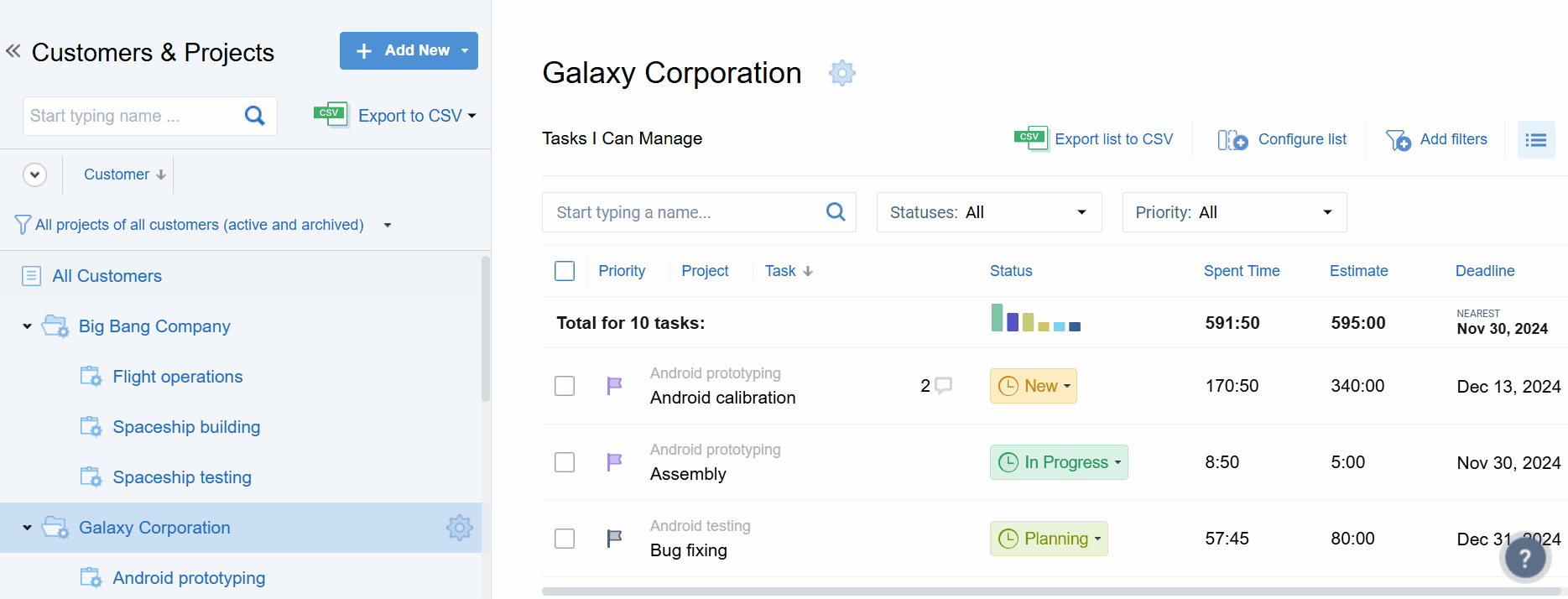
On top of that, actiTIME can automatically log every overtime minute for you – all you have to do is just check your team’s performance reports where overtime hours and relevant costs are displayed in detail. Then, you can use this data to inform your budget estimation process or even find ways to reduce excess costs after a deeper analysis (i.e., by changing your staffing approach and minimizing overtime work).
Sign up for a 30-day actiTIME trial today and see for yourself how much easier your budgeting process can become.
3. Take staff availability under control
Creating an employee schedule is not as easy as throwing darts at a calendar and hoping for the best. We need to carefully analyze our staff availability to ensure we have the right people in the right place at the right time.
To meet your staffing needs just perfectly at all times, you need not only to analyze and predict your staff availability in the long run but also take on a consistent approach to absence management. This is the only way to make the right strategic scheduling decisions, avoid staffing shortages, and ultimately provide top-notch service to your guests.
How to do it correctly:
Examine your team’s current schedules and time off requests
Are there any upcoming vacations or holidays that could impact workloads? Are there staff members who consistently take more sick days or personal days than others? Or perhaps there are some who have already reached their weekly maximum hours?
These factors can all impact your staff availability and should be taken into account before you start to make a schedule.
If you don’t have a proper resource schedule as yet and have no idea of where to start, we have an informative resource planning guide just for you. Fill out the below form to download and use it for free.
Consider any special events, projects, or high-volume periods on the horizon
These could be anything from a holiday weekend to a major conference in town. Take a moment to reflect on past events or busy times and assess how much staff would have been ideal to have on hand.
Does your team have the bandwidth to take on these events or projects without sacrificing their daily responsibilities? If not, bringing on temporary employees may be necessary – albeit more expensive – to ensure that everything is done in a timely and efficient manner.
Keep in mind that it’s always preferable to have too much staffing than too little. This will ensure a smoother operation and happier customers.
Adopt user-friendly leave management software
Analyzing employee availability and absence trends is as easy as pie with actiPLANS, a user-friendly and flexible resource scheduling solution.
With its help, employees can conveniently request days off in advance, giving you plenty of notice to consider their absences before and while scheduling shifts.
Plus, actiPLANS contains comprehensive reports that clearly show who intends to be off work and when. They give insight into historical absence and attendance statistics, letting you create much more accurate shift schedules for your team.
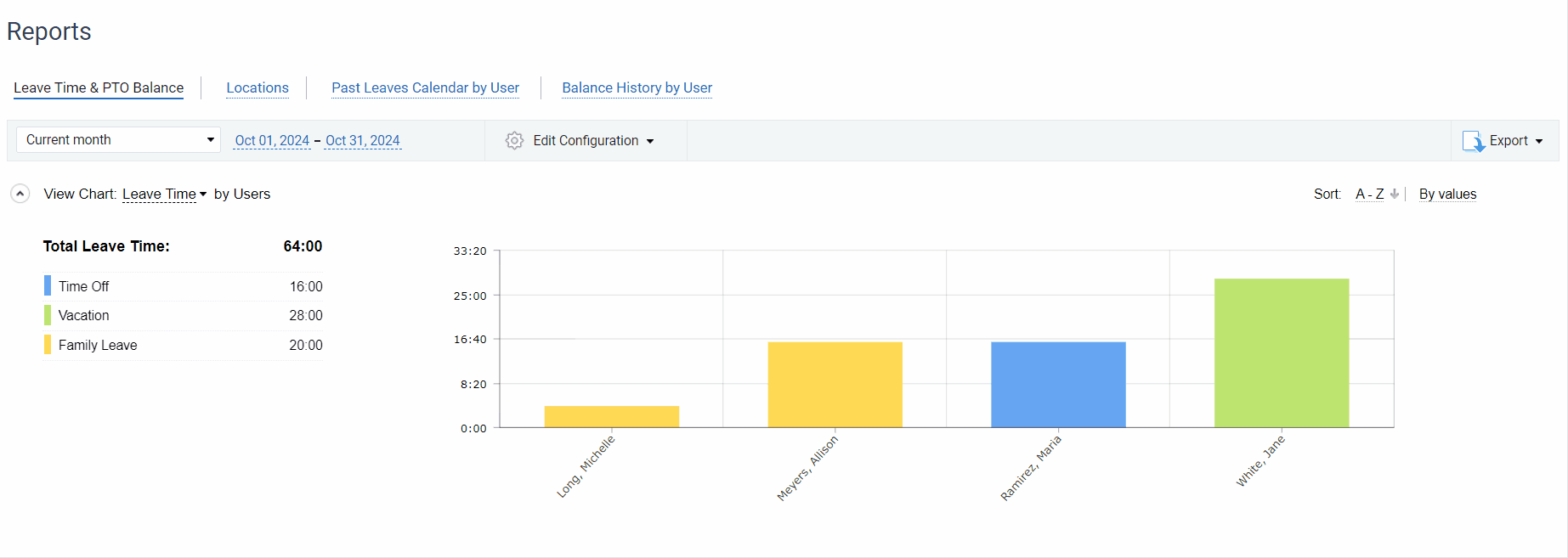
Sign up for a free actiPLANS trial here.
4. Choose an appropriate shift type
The key to choosing an appropriate shift type for your business is to strike a balance between customer needs, employee well-being, and budget constraints. The ultimate choice depends on a plethora of factors, including the day-to-day demand patterns and the overall workplace culture established in your organization.
How to do it correctly:
Assess the demand patterns for your business
Are there certain days or seasons that see a surge in footfall? If so, you may want to consider a more loose and variable scheduling model, where you can adjust staffing levels according to the ebb and flow of customers. This will help you avoid overstaffing during slow periods and understaffing during peak times.
Think of the type of staff you have at your disposal
Do you have a team of full-time employees, part-time employees, or a mix of both? Each type of employee requires a different scheduling approach. Full-time employees may have set schedules, whereas part-time employees may have more flexible schedules.
If you’re just starting to explore which schedule type to choose and haven’t assessed all the possibilities yet, check out this post with a few examples of most common schedule types out there + some practical tips on how actiPLANS can help you manage them all with ease.
Factor in overtime and temporary employees
Overtime work and temporary employees are usually more expensive, and therefore, should be scheduled with care. Consider the cost-benefit analysis of having overtime work versus hiring temporary employees.
5. Take employee preferences into account
As the famous saying goes, “Happy employees make happy customers.” And what better way to ensure employee happiness than by taking their preferences into account when creating a staff schedule?
After all, nobody likes to work the graveyard shift on their birthday or miss a family event because they were scheduled to work.
By involving your staff in the scheduling process, you not only boost their morale but also increase the chances of having a fully staffed and engaged team on the floor.
How to do it correctly:
Offer fair and equal opportunities to all employees
This means that the same individuals shouldn’t get the best shifts repeatedly, and there should be a system in place for rotation. When your staff feels appreciated and valued equally, they’re more likely to show up motivated and ready to work well.
Use a shift bidding system + employee self-service software
By allowing employees to bid on preferred shifts, you’re ensuring that they have a say in their schedules while also promoting healthy competition among them.
However, make sure to have a clear set of guidelines and processes in place to avoid any misconceptions and misunderstandings – that’s where self-scheduling software like actiPLANS steps in to save the day.
Our trusty resource scheduling solution allows employees to schedule shifts for preferable dates on their own. And while they can pick their preferred shift dates without waiting around for you to approve them, you can take a chill pill and watch the schedules fill up magically and then simply adjust and edit them in just a few clicks.
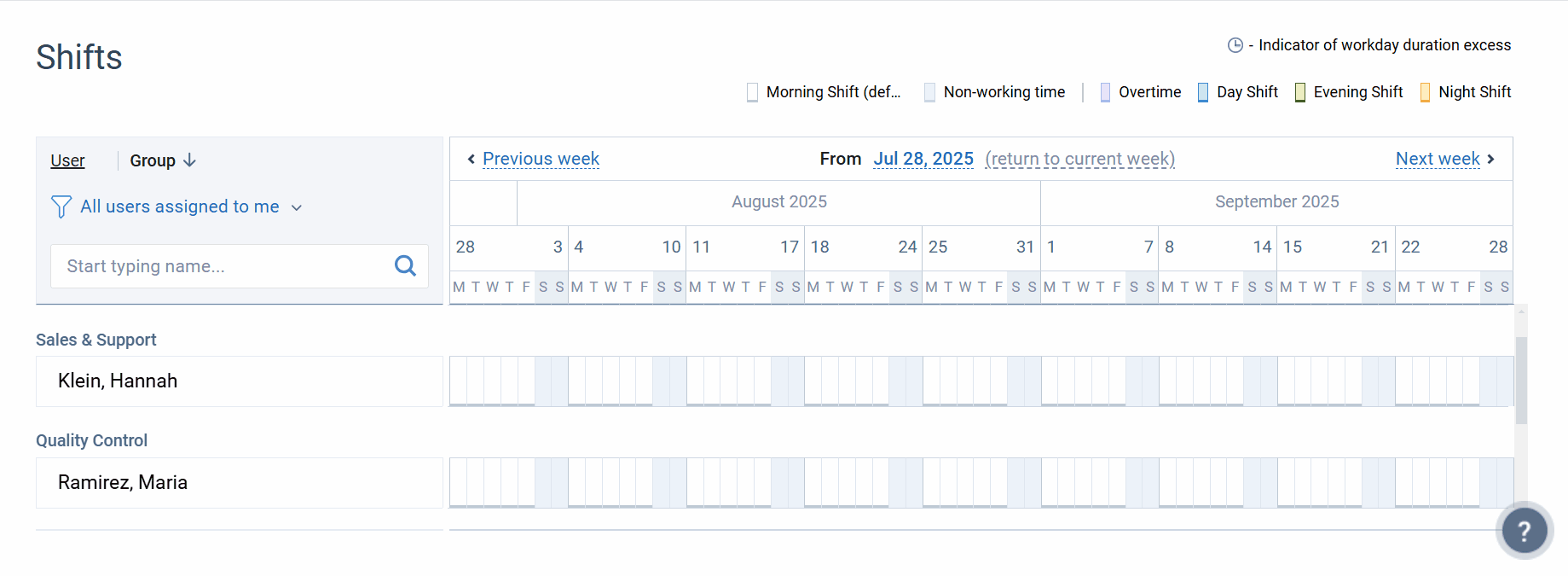
In other words, actiPLANS makes it easy to keep your shift bidding and scheduling process well-organized and efficient. It saves time for managers and helps you boost employee satisfaction by giving them the right level of autonomy over their work schedules.
6. Schedule in advance but stay flexible
Making a staff schedule in advance ensures that your team is prepared and ready for whatever may come their way. However, staying flexible allows you to adapt to those surprise events because you never know when that last-minute emergency or unexpected influx of customers might strike.
So, plan ahead, but keep a few tricks up your sleeve and stay adaptable – that’s the key to more efficient performance.
How to do it correctly:
Embrace the power of technology
Consider using employee scheduling software that allows employees to request shifts or trade them with each other, increasing schedule flexibility without compromising operational efficiency. Plus, no more scheduling mishaps due to the dreaded paper schedule falling apart.
Cross-train your staff
Having employees who are trained to handle multiple roles ensures that you can fill any gaps in scheduling without having to resort to overtime or temporary staff.
Be open to part-time employees
Part-time staff are usually more flexible with their schedules and can help you fill any unexpected staffing gaps. Plus, overtime costs can add up quickly, so having a part-time employee on staff can help mitigate the financial impact of last-minute scheduling changes.
Schedule strategically
When creating a schedule for your hospitality staff, think about the big picture. Schedule your “A team” for the busiest nights and the most critical events, ensuring that you have your best people on the front lines, ready to conquer any challenge.
Anticipate the unpredictable
You already know that anything can happen in the hospitality industry. People call in sick, events get rescheduled, and last-minute reservations come up.
To stay flexible, anticipate these scenarios. Ensure that you have a backup plan in place, and communicate it with your staff, so they know what to expect.
7. Promptly share the created schedule with your team
If you want to avoid a chaotic mess of confused employees, it’s vital that you promptly share the created staff schedule with your team. Not only will it prevent any mix-ups or double bookings, but it also ensures that your team knows exactly when they’re on the clock and ready to impress your guests.
Plus, who doesn’t love feeling prepared and organized? By sharing the schedule promptly, you’re setting your team up for success, and success is always in good taste in the hospitality industry.
How to do it correctly:
Agree on communication methods and timeframes
You can share the created schedules via WhatsApp, emails, Google Drive, or any other online platform your team deems fit. Agreeing on the time and tools of communication ensures that every employee stays informed and can access the schedule easily.
Set expectations
Make it clear to your team members that the schedule is a binding agreement that requires their full attention and adherence. Ensure that they acknowledge the receipt of the schedule and that they understand any consequences of non-compliance.
Use a clear schedule layout
It is true what they say, less is more. Keep your schedule layout simple and clear to understand, avoiding any unnecessary frills or designs. Be sure to organize the information in a logical order as well.
Make use of hotel staff scheduling software with automated notifications
One great example of such a tool is actiPLANS.
This little lifesaver will not only make your staff scheduling job easier but also ensure that every employee is aware of the latest schedule updates and knows exactly when they’re supposed to work thanks to fully automated email notifications.
It’s bound to save you a boatload of time and effort.

8. Track employee attendance and absences
A no-show in a hospitality business can throw a whole shift into chaos and leave guests with a not-so-warm-and-fuzzy feeling. But with a system in place to keep track of who’s working and who’s not, you can avoid these hiccups and keep your scheduling game strong.
Tracking employee attendance and absences isn’t just a way to keep tabs on your workers – it also helps you plan for the future. By seeing which team members are consistently reliable (and which ones might need a little extra prodding), you can optimize your work scheduling to ensure that your business is staffed appropriately – no more, no less.
How to do it correctly:
Establish clear attendance policies and communicate them to your frontline workers
Make sure your team understands what the expectations are regarding the timeliness, punctuality, and the procedures they should follow if they need to call out sick. It’s also beneficial to encourage a culture of accountability – if everyone knows that attendance is a top priority, then they’re more likely to take it seriously.
Invest in a reliable attendance tracker system
There are myriad software options available that can help streamline the process – from biometric scanners to mobile apps. These systems can not only log employee arrival and departure times but also provide insights into trends and patterns over time.
actiPLANS is an excellent example of automation-powered attendance management tool.
From customizable shift types and PTO management rules to intuitive visual attendance timelines and an easy-to-use mobile app, actiPLANS has a multitude of valuable features to help you handle your staff scheduling needs in the most effective way possible.
Hundreds of hospitality businesses like yours already apply actiPLANS every day. Learn why they love our software and how it simplifies their workforce management chores here.
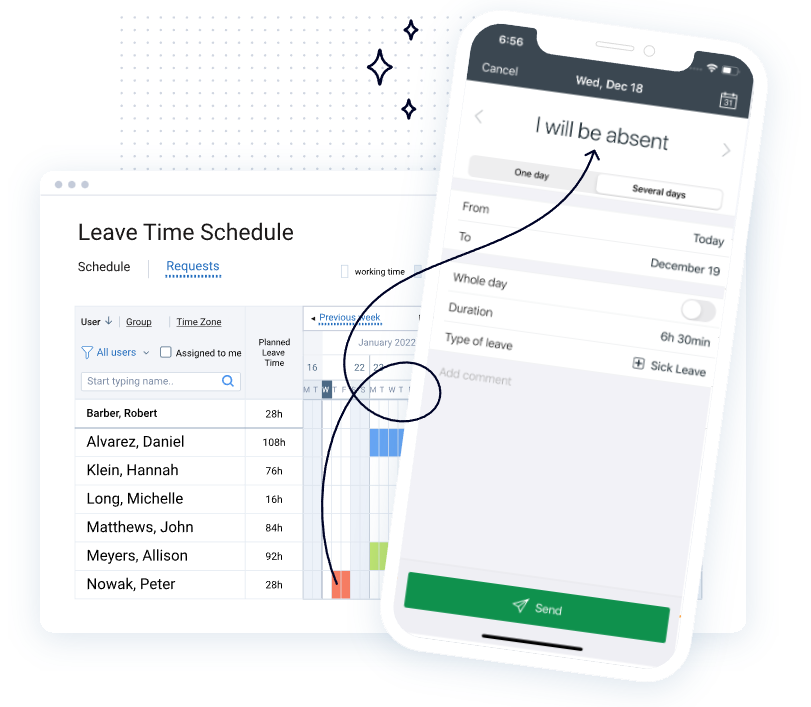
Key Benefits of Effective Hospitality Staff Scheduling
- Cost savings: A well-planned schedule plays a role in reducing labor costs by helping you avoid unnecessary overtime or overstaffing during slow periods. A proper schedule is your guarantee that the right number of employees is working at the right time, which ultimately saves a considerable amount of money in wages.
- Improved employee satisfaction: Effective scheduling empowers employees to achieve a better work-life balance, which often contributes to higher job satisfaction and lower staff turnover. In the end, happy employees lead to happy customers, and that translates to a more successful business.
- Enhanced customer service: When a business has enough staff on hand during peak hours, customers are more likely to receive faster and more attentive service. This, in turn, improves customer satisfaction, results in repeated visits, and encourages positive reviews.
- Higher productivity: Staff scheduling involves a lot of planning. It ensures that your team works in the most productive way possible and all tasks are completed efficiently and on time. This lets you avoid any delays or process bottlenecks and enhance the overall operation of the business.
- Flexibility: A well-designed schedule allows for adjustments throughout the week to accommodate changes in customer volume or staff availability. It makes it easier to prevent staffing shortages and prepare your business to provide exceptional service at all times.
- Compliance with labor laws: Effective scheduling makes it easier to adhere to labor laws regarding overtime, employee breaks, and scheduling for part-time staff. This way, you can maintain an excellent workplace reputation and minimize legal risks, as well as any potential costs associated with them.
Conclusion
You don’t need a degree in hospitality management or years of experience to keep an airtight staff schedule. By taking the time to plan ahead and organize processes accordingly, you can easily navigate any unexpected surprises that arise.
And with actiPLANS, the process can become even simpler.
This easy-to-use digital platform offers restaurant and hotel managers the ability to streamline their scheduling procedures while cutting down on tedious paperwork and unnecessary administrative expenses at the same time.
So, go ahead and sign up for a free actiPLANS trial today – this is your foolproof recipe for super-efficient hospitality staff scheduling!



